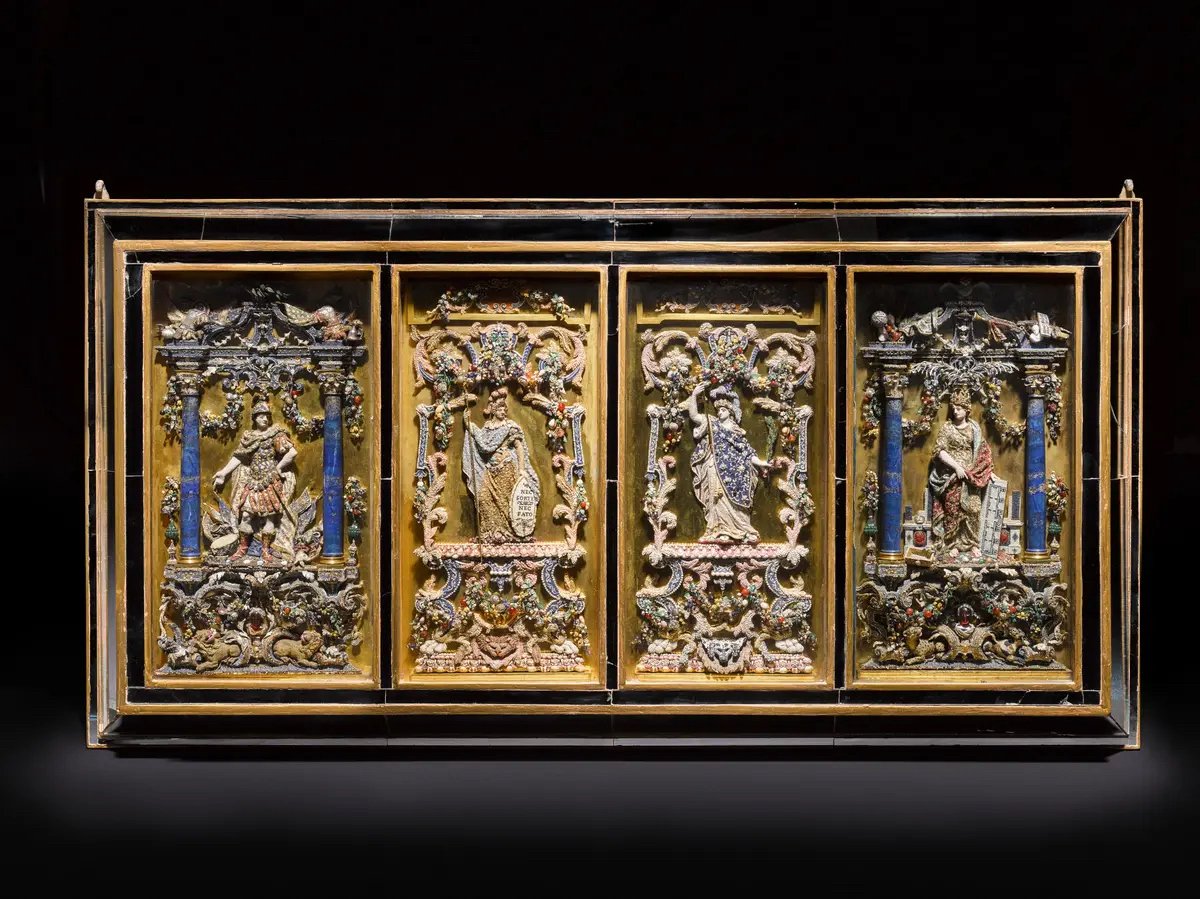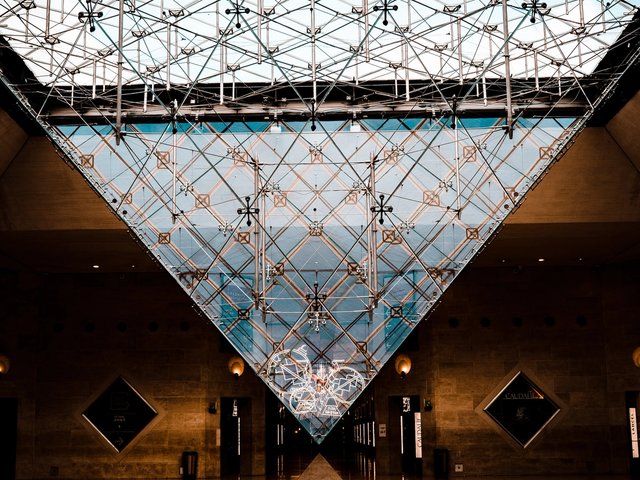The UK government has placed an export bar on an important set of four highly ornate panels adorned with glass, pearls, shells, stones by the Flemish artist De Vély. The panels, created in the 17th century, are the only known surviving works by the artist according to the UK department for Culture, Media and Sport (DCMS).
The export bar, which allows time for a UK gallery or institution to acquire the painting, will expire on 17 March. Otherwise the work is at risk of leaving the UK unless a domestic buyer can be found to save it for the nation, adds the DCMS which says the panels have a recommended price of £1,620,000 (plus VAT of £54,000 which can be reclaimed by an eligible institution).
The panels were sold at Sotheby’s London for £1.6m with fees (est £200,000-£300,000) last July. They depict four different personifications or gods: Mars, Virtu Invincible, Minerva, and Magnificence and are believed to have taken around 20 years to complete.
“The panels are overall in outstanding condition, with minor dirt and wear to the surfaces. Some of the pearls, glass granules and shellwork has been reattached, and some lost. A few detached glass granules and small shells are in each cassette,” says a report by the reviewing committee on the export of works of art which adds that the works are a “tour de force and a brilliant display of technical virtuosity and patience”.
De Vely, who signed the Fairhaven panels, remains entirely elusive, says the committee. “The only mention of this artist that has come to light comes from the sale of the Spanish naturalist Pedro Franco Dávila (1711–1786) in Paris in 1767 where two mythological scenes in relief, made by a ‘Flemish named Vély, in 1702’ are listed.”
The panels are thought to have been acquired for the Fairhaven collection by the Anglo-US collector and philanthropist Cara Leyland Rogers (1867-1939), who later became Lady Fairhaven. She was the daughter of the US oil tycoon Henry Rogers of Fairhaven.
Pippa Shirley, a member of the reviewing committee, says: “The panels have much to tell us about links between artistic workshops and practices, the trade in precious materials, patronage and taste, not to mention the connection to the highly significant Fairhaven collections. All this and more can only be fully explored if the panels remain here.”



